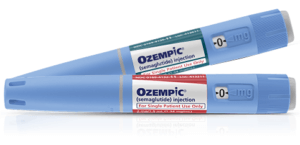
Chronological aging counts the number of years since birth. Biological aging compares a number of different measures of general health, for example, maximal oxygen consumption, telomere length, DNA methylation, blood pressure, A1C (long term blood sugar levels) cholesterol levels, heart rate, and many more. Using complex calculations, gerontologists believe that they can now compute a person’s “biological age”, which can be used as a measure of general health, and also as a predictor of life expectancy (longevity.)
The importance of the subject comes from the possibility that drugs could be (or already have been) developed that can directly affect the body’s biological aging process, and dramatically reduce the incidence of life-threatening conditions such as diabetes, dementia, cardiac failure and cancer, all of which go hand-in-hand with growing old.
Welcome to gerontology
Aging research explores how the body changes over time and how these changes drive disease. Instead of treating each illness separately, geroscience aims to improve overall resilience by slowing the underlying processes that contribute to aging. The ultimate goal is extending the health span—the number of years a person remains active, independent, and free of serious disease.
Why target aging instead of diseases?
Aging is the strongest predictor of most chronic illnesses. Managing one condition does little to prevent others. Frailty studies show that older adults may lose years of good health even when their individual diseases are well controlled. By focusing on cellular aging, scientists hope to protect multiple organs at once rather than chasing problems as they appear.
More about biological vs. chronological age
Chronological age counts years. Biological age reflects how well the body is functioning. Someone may be fifty on paper but biologically closer to forty if they stay fit and maintain strong cellular health. DNA methylation clocks, fitness tests, and metabolic markers are increasingly used to estimate biological age and help evaluate whether interventions truly slow aging.
What science says about the biology of aging
Scientists have identified several hallmarks that drive cellular aging:
- Telomere shortening, which limits healthy cell division.
- Epigenetic changes that alter how genes behave.
- Mitochondrial decline leading to lower energy production.
- Slower autophagy, causing waste proteins to build up.
- Chronic inflammation (“inflammaging”).
Genetic findings such as the m.3243A>G mitochondrial variant highlight how energy production, physical performance, and dementia risk may be tied to aging pathways.
Nature’s “proof of concept” – calorie restrictive diets
Caloric restriction remains the most proven biological tool for extending lifespan in animals. In the ongoing CALERIE Trial, adults who ate fewer calories for two years showed slower biological aging than the control group. Benefits included improved metabolism, stronger DNA repair, and lower inflammation. These findings inspired drugs that mimic the effects of caloric restriction without extreme dieting.
The central question: Can a pill really slow aging?
Several existing medications appear to influence mechanisms related to longevity, even though they were developed for other purposes. These drugs are now being studied as potential anti-aging medicine that might one day become part of a broader toolkit for slowing aging.
Metformin
Research into Metformin aging shows that this diabetes drug activates AMPK, reduces inflammation, and supports cellular repair. Long-term users show lower rates of dementia and Parkinson’s disease, and during COVID-19, metformin users had better survival rates. Whether it helps healthy, non-diabetic adults is still under investigation.
Rapamycin
Rapamycin is one of the most studied longevity drugs. It acts through the mTOR pathway to boost autophagy and reduce harmful cell buildup. Animal studies show lifespan increases of up to 25%, even when treatment begins in later life. Early human trials suggest improved immune function in older adults.
Senolytics
Senolytic drugs remove senescent “zombie cells” that accumulate with age and damage nearby tissues. Eliminating these cells has extended lifespan in animals and improved physical performance. Early human trials show reductions in biomarkers linked to cellular aging.
GLP-1 medications (semaglutide, tirzepatide)
GLP-1 drugs such as semaglutide and tirzepatide improve metabolism, reduce inflammation, and support weight loss – effects closely linked with slowing aging. People who received semaglutide in STEP trials experienced major improvements in cardiovascular outcomes. Researchers are now studying whether these drugs offer additional direct longevity benefits. This connection between semaglutide and aging continues to grow in significance.
The way forward may be bumpy
The FDA does not currently classify “slowing aging” as a treatable condition, which limits industry incentives to develop anti-aging medicine. Researchers propose adding aging-related measures – frailty, cognition, mobility- to future clinical trials to build evidence that these drugs meaningfully affect the aging process.
Practical implications of geroscience for everyday life
Everyday habits play a powerful role in slowing aging:
- Moderate calorie intake with nutrient-dense foods.
- Regular exercise to improve mitochondrial health.
- Good sleep for DNA repair and immune strength.
- Managing long-term conditions such as diabetes and hypertension.
Our goal at IsraelPharm is to help customers access trusted medications like Metformin, Ozempic, Wegovy, Mounjaro, Zepbound and Rapamune at affordable prices, supporting long-term health and vitality.
Take away – The promise of geroscience
“Therapies that target aging biology may slow disease development and functional decline.” This summary from JAMA captures the growing belief that treating aging biology may unlock longer, healthier lives.
The goal is not to avoid aging but to improve the prospects for a long healthy life. Geroscience aims to turn aging from an unavoidable decline into a manageable process—one supported by smart lifestyle choices, medical science, and emerging treatments that may one day help people stay active far longer.
Frequently asked questions about slowing aging with medication
Can a pill truly slow aging?
Researchers are exploring whether certain medications can influence fundamental pathways of aging biology. Drugs such as metformin, rapamycin, senolytics, and GLP-1 therapies affect processes like inflammation, autophagy, metabolism, and cellular repair. Early studies in humans are encouraging, but most evidence so far comes from animal research. While no pill can stop time, these treatments may help extend the health span by reducing harmful changes linked to aging. Anyone considering medication for slowing aging should speak with a qualified healthcare provider.
How is biological age measured?
Biological age is estimated using markers that reflect the body’s functional state rather than the number of years lived. DNA methylation patterns, telomere length, metabolic markers, and physical fitness are common tools used in aging research. These measurements can show whether the body is aging faster or slower than expected. Scientists use biological age to test whether interventions, such as longevity drugs, lifestyle changes, or caloric restriction, actually improve cellular health.
Are GLP-1 medications anti-aging drugs?
GLP-1 medications like semaglutide influence key systems involved in slowing aging. They lower inflammation, improve metabolic health, support weight control, and decrease cardiovascular risk. These benefits overlap with pathways connected to longer health span. While they are not officially approved as anti-aging medicine, growing research examines the relationship between semaglutide and aging. For now, their primary role remains treating diabetes and supporting weight management.
Do senolytics really remove “zombie cells”?
Senolytics are a class of longevity drugs designed to clear senescent cells – damaged cells that stop dividing but continue releasing inflammatory chemicals. These cells accumulate with age and contribute to frailty, inflammation, and tissue breakdown. Removing them improved lifespan and physical strength in animal studies. Human studies are still early, but results so far suggest senolytics may reduce markers of cellular aging. Researchers believe they could become an important tool for slowing aging in the future.
What lifestyle habits support slower biological aging?
While drugs may eventually help slow aging, daily routines still play a central role. Regular physical activity improves mitochondrial efficiency, while good sleep supports DNA repair. A balanced, nutrient-dense diet mimics aspects of caloric restriction without extreme dieting. Managing chronic conditions and avoiding smoking also support a younger biological age. Together, these habits complement emerging treatments and form the foundation of healthy longevity.














